Missing on Kashmir’s beloved ski slopes: snow and tourists
Residents in a globally renowned resort town bear the brunt of an unusually dry winter that’s being blamed on unregulated tourism and climate change.
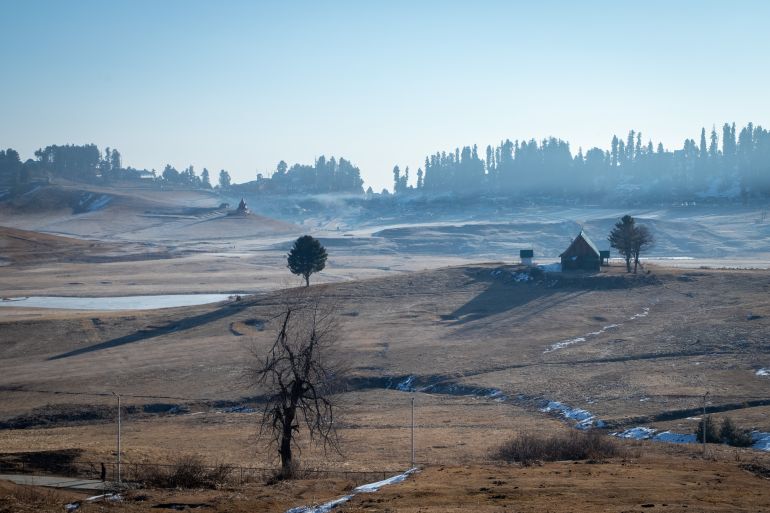
Gulmarg, Indian-administered Kashmir – A dismayed Javad Ahmad gazes up at the clear blue skies, and at the barren and crimson ski slopes in Gulmarg, a popular tourist destination in Indian-administered Kashmir’s Baramulla district.
Sitting outside his closed ski shop, he is hoping for snowfall as an unusually dry winter disrupts tourism and threatens livelihoods in the Himalayan region.
Keep reading
list of 4 items‘More beautiful than Europe’: Kashmir tourism to hit 10-year high
India hosts G20 tourism meet in Kashmir under heavy security
Is India projecting ‘normalcy’ in Kashmir by holding G20 meeting?
A ski trainer by profession, Ahmad is usually booked nearly every day between December and February as millions of Indians visit the picturesque valley, skiing on its white slopes and sightseeing around the snow-capped mountains and dales.
But he is out of work this year, along with hundreds of other trainers and mountain guides.
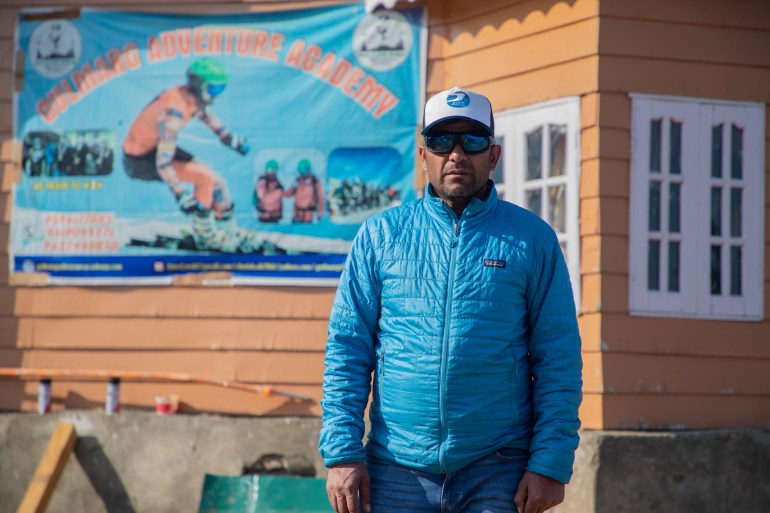
All the ski slots booked until early February have been cancelled. On average, he says, the mountains used to have 30 to 40 feet [9-12 metres] of snow at higher altitudes. Now, that’s down to three feet of snow.
The famous Gulmarg ski resort, located close to the Line of Control that divides Kashmir between India and Pakistan, now wears a deserted look.
“This is for the first time in 20 years of my skiing career that I am sitting back without work in the month of January,” the 41-year-old says.
“It breaks my heart to see these mountains snowless.”
‘Thinking of switching my job’
The snowless mountain slopes have forced Ahmad to rethink his profession.
“I don’t see the future in skiing. I am thinking of switching my job, which again is not easy for me. If the situation remains the same, I may have to look for an alternative livelihood,” he says.
Muhammad Yasin, one of the oldest ski trainers in Gulmarg, says the ski grounds used to be crowded this time of the year, “but now it’s all empty”.
“If it snows, our work will commence and if not, then all we can do is wait,” Yasin says.
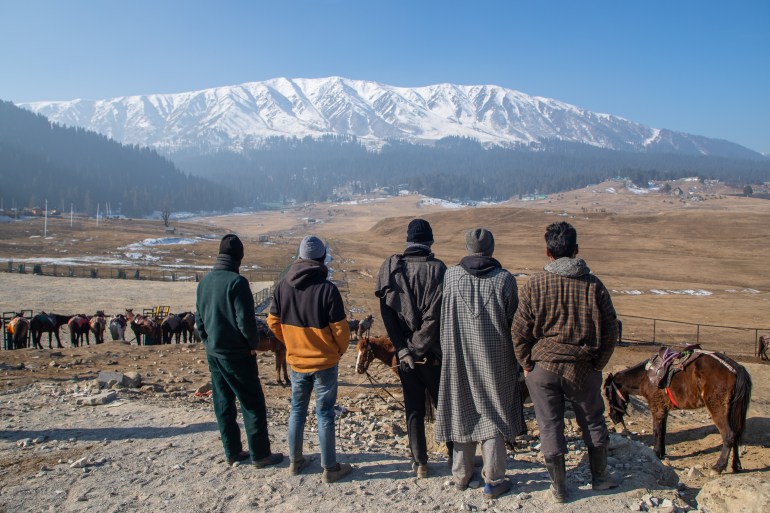
Indian-administered Kashmir, including the Ladakh region, is facing a severe dry spell this winter in both the plains and higher altitudes in the Western Himalayas.
In Kashmir, the economy broadly depends on tourism, which contributes 7 percent to the region’s gross domestic product (GDP). As per the government data, 16.8 million tourists visited the valley until the end of September 2023, while about 19 million tourists arrived in 2022 – the year tourism was revived in the disputed region, also claimed by neighbouring Pakistan, after nearly three years of lockdown.
Tourism in Indian-administered Kashmir was severely hit in 2019 when New Delhi scrapped the region’s special status and imposed a months-long security clampdown. That was soon followed by the coronavirus pandemic and more lockdowns, disrupting lives and livelihoods.
But the lack of snowfall this year has again raised fears of another wasted year. And not just for ski trainers, but for hoteliers, guides and other workers.
“This is the first time I am visiting Kashmir and it is pretty disappointing without snow,” says Muhammad Suhail, a tourist. “We had paid in advance for hotel and other things, otherwise we would have called off the trip.”
In fact, numerous hotel bookings have been cancelled.
“Almost 30 percent of bookings have been cancelled and it is increasing day by day,” says Aijaz Bhat, a hotel manager in Gulmarg.
“Our guests are checking out and departing early.”
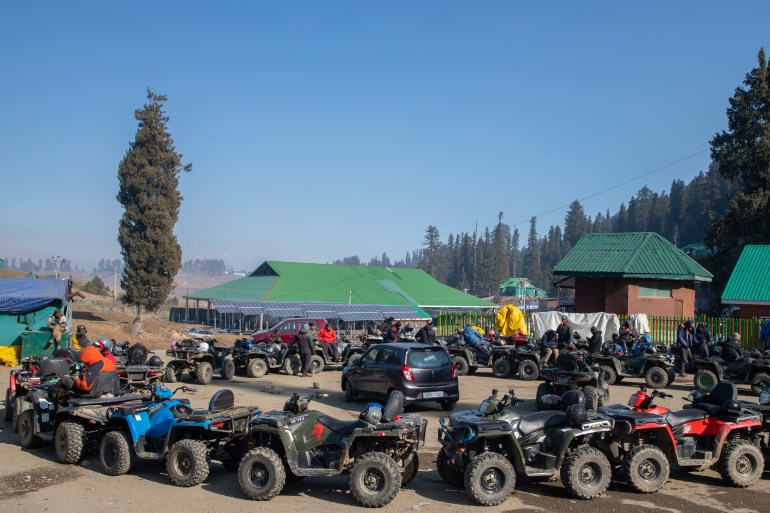
‘Snowless, brown land’
Pony rides are among the major local attractions for tourists. Now, the men who manage the ponies say they wait in their stands the entire day and return home in the evening without making any money.
“We don’t earn even $2 a day. The tourists get upset and return when they see snowless, brown land,” says 45-year-old Bashir Ahmad.
The meteorological department in Indian-administered Kashmir has predicted dry weather until January 24. If the spell continues, it’s unclear whether India’s annual national winter games, usually held in Gulmarg in the first week of February, can go ahead.
“During the winters, tourism in Gulmarg gets a boost due to the national winter games. If the situation persists, the games may be cancelled this year,” says Ghulam Nabi Lone, president of the traders’ association in the resort town.
Gulmarg’s residents blame the failure of the local administration to tackle pollution as the reason behind the snowfall deficit, especially in ecologically fragile tourist destinations.
“We have not seen Gulmarg like this in decades. The authorities are not able to curb pollution,” says Tariq Ahmad, president of the pony workers’ association in Gulmarg. “They are also clearing the forests for construction purposes and dumping garbage in the forests.”
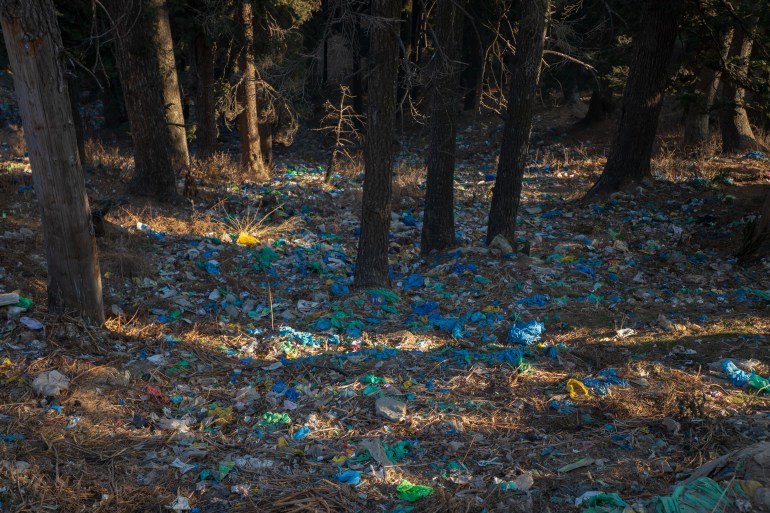
Water crisis feared
Experts also say that unregulated tourism may have contributed to pollution and climate change in the Himalayan region.
“Increased footfall often leads to resource overuse, waste generation and carbon emissions impacting local ecosystems and exacerbating global warming,” says environmentalist Anjal Prakash.
Raja Wasim, the chief executive officer of the Gulmarg Development Authority, says while sustainable tourism was the authority’s priority, it could not take all the measures at once. “It is a gradual process and it will take us some time to change and regulate things,” he says.
Wasim also denies the lack of snowfall has hit tourist footfall in the area but admitted that some hotel and ski cancellations had taken place.
Experts also say the snow deficit in the upper Himalayas may have been caused by climate-related disruptions, altering the traditional precipitation patterns.
“The Himalayas have been experiencing the impact of climate change, including glacier retreat and changes in snowfall patterns,” says Prakash, adding that factors such as rising temperatures, melting or retreating glaciers, and changing atmospheric circulation have contributed to the reduced snowfall.
“This shift poses threats to water availability, agriculture and ecosystem health,” he adds. “The local population faces heightened vulnerability to natural disasters and resource shortages, escalating socioeconomic challenges.”
Geologist Shakil Romshoo warns that a lack of snow in the region could lead to a scarcity of water later in the year too.
“The less-than-normal snowfall, with abnormal high day temperatures might lead to water shortages during summers, which will not be sufficient to meet the requirements of water-intensive paddy cultivation in Kashmir,” he says.
“The low snowfall has already hit winter tourism in Gulmarg and other hill stations in the valley and if the trend continues, it is going to be worse in the future.”